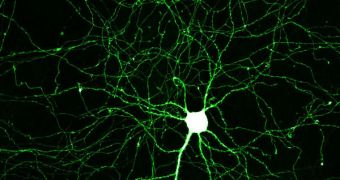When the human brain is damaged in a traumatic event, neural pathways are disrupted, and functions are lost. A new technology may help people that went through such situations, by promoting the growth of new nerve cells.
A group of investigators in the United States has recently set the foundation for a new type of treatment aimed at relieving the effects of brain injury. Their work was prompted by the results of the wars the country is currently leading in Iraq and Afghanistan.
The scientists are basically trying to produce micoelectronic circuitry, that would be responsible for facilitating the growth of axons, which are the bodies of nerve cells called neurons.
The work is being led by Pedram Mohseni, who is based at the Case Western Reserve University, and Randolph J. Nudo, who holds an appointment at the Kansas University Medical Center.
The two experts looked at the damage suffered by American troops deployed overseas, and determined that a way to address brain damage had to be devised.
This type of injury is defining for these two conflicts, says Mohseni, who is a CWRU professor of electrical engineering and computer science. But these are not the only applications possible.
In the near future, it may be possible to apply the method currently being developed to case where brain injuries came from strokes, car crashes, and other such scenarios, adds Nudo.
He is a professor of molecular and integrative physiology at the Medical Center. The expert explains that the team is simply trying to make the brain capable of rewiring faster than ever.
The ultimate goal for treating this type of injury is to restore normal behavior and movement in the patients, experts say. One way to do that is by rewiring the brain, while another is to bypass the damaged area.
The weeks after injury are the crucial ones when it comes to treatment, the duo believes. Distant neurons need to communicate as much as possible during this critical stage, and the new technique is meant to make that a reality.
“The month following injury is a window of opportunity. We believe we can do this with an injured brain, which is very malleable,” Mohseni explains.
Some of the most common symptoms of brain damage include loss of coordination, balance, mobility, memory and problem-solving skills, the expert adds.
When this happens, those who have been in traumatic events begin experiencing mood swings, depression, anxiety, aggression, social inappropriateness and emotional outbursts.

 14 DAY TRIAL //
14 DAY TRIAL //